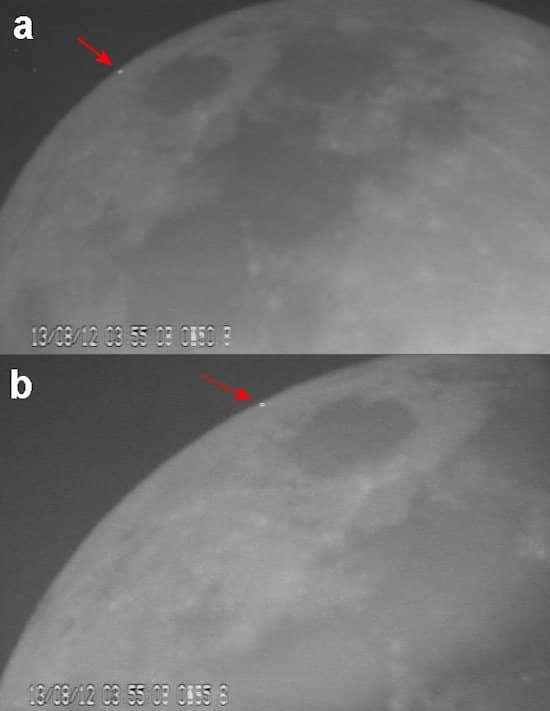The European Space Energy recently released footage of two meteorites making contact with the moon’s surface. The video is showing two distinct flashes as the meteors crashed into the moon’s surface. The encounter was pretty violent, however, scientists say that the size of the meteorites would be no larger than the size of a walnut. The collisions occurred in July, and both of these were 24 hours apart from each other. A powerful telescope system in Spain captured the crashes.
Despite the small size, the flashes of the meteorites were detectable on the telescopes on earth. The scientists from European Space Agency (ESA) say that these meteorites were fragments of the midsummer Alpha Capricornids meteor shower. The moon was hit by these meteoroids when they passed through the end tail of Comet 169P/NEAT. ESA officials gave a statement saying, “For at least a thousand years, people have claimed to witness short-lived phenomena occurring on the face of the moon. By definition, these transient flashes are hard to study, and determining their cause remains a challenge.”
The officials further added, “For this reason, scientists are studying these ‘transient lunar phenomena’ with great interest, not only for what they can tell us about the moon and its history but also [for what they can tell us] about Earth and its future.” The action was captured by the Moon Impacts Detection and Analysis System (MIDAS). It is located on three different locations across Spain. The system has high-resolution CCD video cameras designed to pick up these subtle flashes of light. These flashes are usually more accessible to spot if they occur during a lunar eclipse.

According to researchers, apart from providing essential information about the moon and its relationship to other celestial objects, these impacts also open up opportunities to investigate other meteorite impacts on different locations of the solar system as well. Jose Maria Madiedo, member of MIDAS and a meteorite researcher at the University of Huelva in Spain said, “By studying meteoroids on the moon, we can determine how many rocks impact it and how often, and from this, we can infer the chance of impacts on Earth.”


